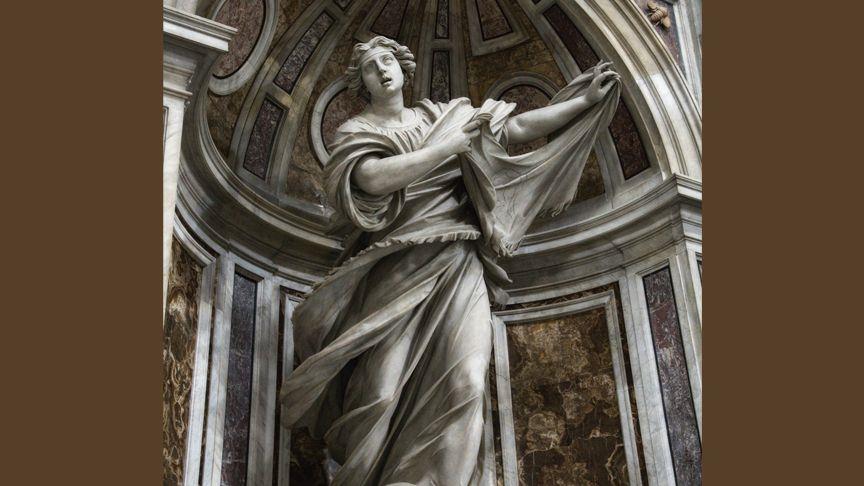St. Veronica is the noted woman who, moved by the sight of the condemned prisoner Jesus on the way to Golgotha for his crucifixion, broke through military lines to wipe his battered, bloody face. The result is the imprint made by the co-mingling of blood and perspiration on her veil. For this reason, she has been canonized by the Roman Catholic Church a saint with her feast day celebrated on July 12th.
A saint is a holy person believed to have a special relationship to the Almighty God, because of moral excellence. The concept is widespread throughout the world across all religions, both ancient and contemporary. Various types of spiritual men and women have been recognized as saints, both by popular acclaim and official pronouncement. Organized religion has held them up for us as role models. Their influence on the religious masses continues to be of considerable significance.
In the case of each of these a specific kind of relationship with God is entailed. Seers for example have an inspirational vision of the future. Prophets proclaim a revelation, be it predictions of the future or commentary of the present. Monks and nuns lead spiritual lives in accordance with ascetic regulations that they generally observe for their lifetime.
In Roman Catholicism for a man or woman to become a saint requires the process of Canonization which necessitates proof that the candidate has performed miracles during their lifetime. Veronica is one such individual held up to us as a role model.
In Christian traditions she is venerated at the sixth station in the mediative Stations of the Cross. Her imprinted veil is reverently referred to as the Veil of Veronica, or since it is believed to be kept under glass in France, the Shroud of Turin.
There are however several such existing images on veils purported to be the original relic, or an early copy of it. The account of St. Veronica is thought to be a legend originally derived from Historia eccleiastica written 312-324 AD by Eusebius of Caesarea. Eusebius tells us that at Caesarea Phillipi there lived a woman whom Christ healed of a hemorrhage as reported by Matthew in the 9th chapter of his Gospel. In the apocryphal Acts of Pilate from the 4th—5th century this woman came to be identified as Veronica. Later the tradition held that Christ gave the healed Veronica a miraculous cloth, which was allegedly used to cure the emperor Tiberius of leprosy.
 |
|
Saint Veronica statue inside Saint Peter’s Basilica, Rome, Italy.
File Photo
|
We have very little details on the life of this venerated saint but based on what has been written about her, we should look to her for the strength, courage, and patience to lead a pure and virtuous life.
